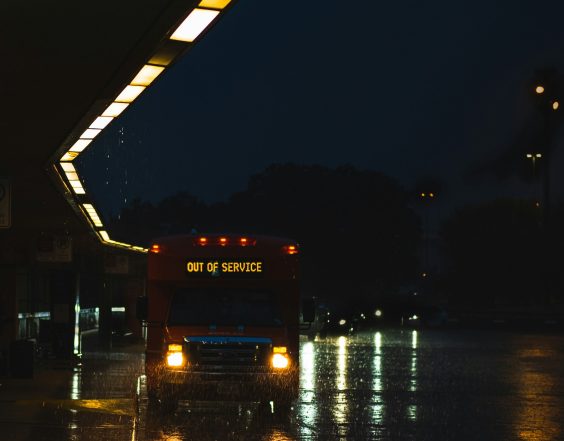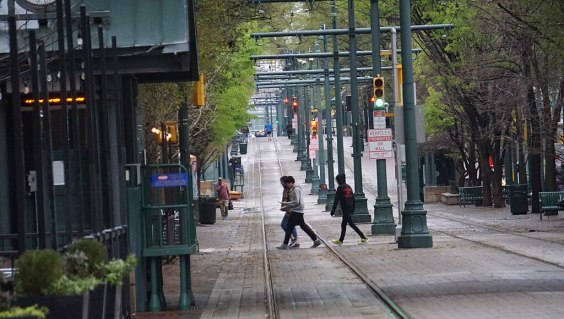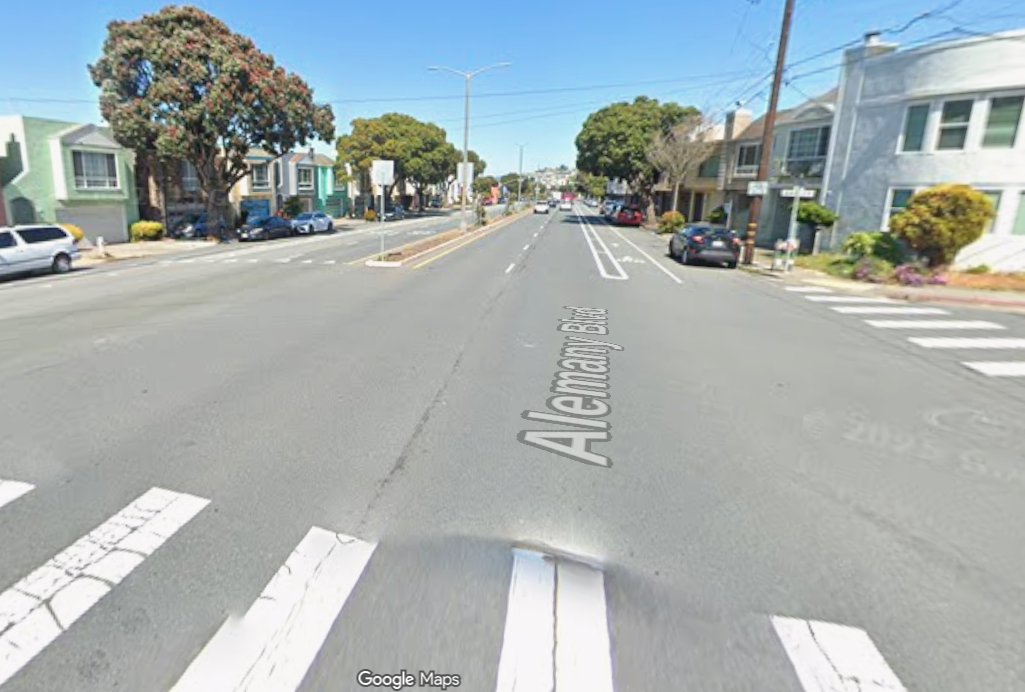 Flickr photo: laverrue
Flickr photo: laverrueCable cars are icons of San Francisco, a draw of tourist dollars far beyond their fare revenue, and living pieces of San Francisco history and transit. They're also protected in the city's charter, just like the Transit First policy, though perhaps with greater force. Like the Golden Gate Bridge, cable cars bring visitors to the city, where they spend their money at hotels, restaurants, museums, bars, and other attractions. But while their overall economic value to the city undoubtedly exceeds their operating cost to Muni, their fare revenue does not. And unlike the Golden Gate Bridge, cable cars do not ultimately provide a vital transportation link for residents and commuters.
Angela Jackson, a spokesperson for the San Francisco Convention and Visitors Bureau, wouldn't put an exact dollar figure on cable cars' value to local tourism, an industry that brought in about $8.5 billion to San Francisco last year. But they're certainly one of the top draws, she said. "The cable cars for San Francisco are invaluable as far as tourism goes. Cable cars are one of the must-experience attractions for everyone who comes to San Francisco."
"I used to work for one of the hotels that was on one of the cable car lines, and we would get calls once a week from some production company wanting to stage photo shoots because it stopped in front of our hotel. I don't think there's anything that depicts San Francisco, whether it be a feature article in a magazine or in a newspaper, or a travel series that does not include the cable car."
Cable cars are routinely packed, in spite of frequent service and a five-dollar one-way fare for those without a Fast Pass. As a result, cable cars recover roughly half their operating cost through fare revenue, about $24 million in fiscal year 2008, an impressive feat given that they are by far the most expensive mode to operate in the Muni system. In fiscal year 2008, that still left $27 million that the MTA had to subsidize from its general operating funds, a significant sum considering Muni's $129 million deficit this year. Getting rid of cable cars would be killing the golden goose, not to mention a historical atrocity and a violation of the city charter, but could there be a source of funding that more directly harnesses cable cars' contribution to citywide tourism revenue?
Quite possibly, explained Livable City's Tom Radulovich. "There's two loopholes in the city's parking tax. For a long time, hotel parking was paying neither the parking tax nor the hotel tax. So I think now [the city is] saying pay one or the other. The parking tax rate is higher, so if we taxed [all] hotel parking at the higher rate then that would raise more money. So, you'd in essence say, 'Okay, we're going to use hotel parking to subsidize transit for visitors.' That seems reasonable, and it's not adding to the basic hotel tax."
The second option, said Radulovich, is to close the loophole for
valet parking. "Valet parking doesn't pay anything," he said.
Closing that loophole and "dedicating it to visitor transit might make
sense as well."
 Inside the cable car barn. Flickr photo: 4PIZON
Inside the cable car barn. Flickr photo: 4PIZONJackson said the San Francisco Convention and Visitors Bureau certainly is not proposing an additional tax or assessment, but Radulovich said the parking taxes might have a chance at gaining business support if they directly enhance tourism, and don't add to the base hotel tax.
A tourism-based revenue source might also free the city to start paying more attention to properly planning transit that services tourists, and locals. Many transit advocates are hesitant to fund tourist transit when transit for locals is woefully under-funded. Still, tourist transit serves an important function in the city, with benefits to locals, like reduced traffic congestion, so finding a source of funding that doesn't compete with local transit funding could pay serious dividends.
"I think as a city, we ought to say, 'Come to San Francisco, leave your car. You can get around to all the tourist destinations and have fun doing it without a car,'" said Radulovich. "For years I've thought it would be smart to spend some portion of the hotel tax on visitor-related transit. Cable cars, F-line, even doing a fare-free downtown like Portland and Seattle do, that could make a lot of sense for us in terms of making it really visitor friendly but also making the system work better for locals and cutting down tourism-related traffic."
Kristen Holland, a spokesperson for the MTA, notes that some of the cable cars' 24,000 daily riders are locals. "I know a lot of operators say they have people with Fast Passes on all the time," said Holland. "They have sort of a dual purpose."
Because the cable cars are so crowded, most riders do seem to be visitors, but lines that are popular with tourists tend to attract locals as well, as the F-line historic streetcar also demonstrates (the recently defunct Culture Bus shows the pitfalls of a strictly-tourist line.) Finding a tourism-based source of funding for lines heavily used by tourists could ultimately help increase service on lines that are used by locals too. Of course, MTA Board Director Malcolm Heinicke has also suggested introducing tasteful advertisements on cable cars, without much further discussion so far. The additional funding would certainly help, though advertising on historic structures is always contentious.
While Gavin Newsom has created a "Green Rental Car Incentive," it may be time for the city to adopt a truly green tourist transportation policy that encourages transit use, and funds it more directly through tourist dollars. The result could be a much better system for tourists and locals alike.




